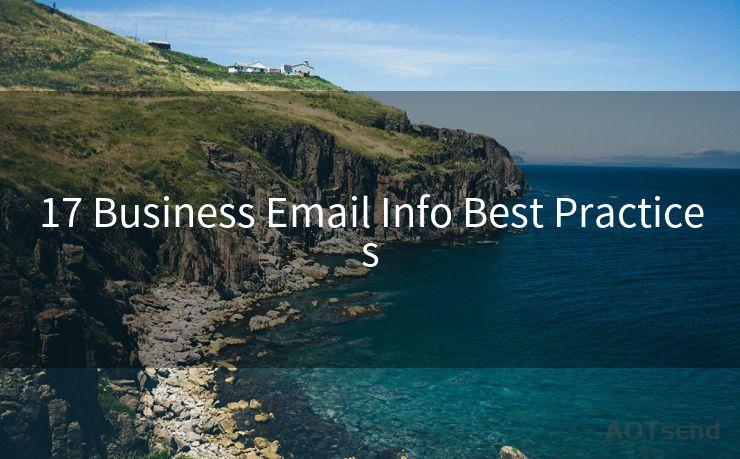17 Business Email Info Best Practices




When it comes to professional communication, business emails play a pivotal role. Mastering the art of writing impactful emails can significantly enhance your brand image and improve work efficiency. Here are 17 best practices to help you craft effective business emails:
1. Clear and Concise Subject Line
Start with a subject line that summarizes the email's content. A clear subject increases the chances of your email being opened and read.
2. Professional Greeting
Always begin your email with a professional greeting, addressing the recipient by their name if possible. This sets a polite and respectful tone for the communication.
3. Direct and to the Point
Get to the point quickly. State the purpose of your email in the opening paragraph, avoiding unnecessary introductions or filler content.

4. Use of Formal Language
Maintain a formal tone in your emails. Avoid colloquial or informal language, as it might not reflect well on your professionalism.
5. Structured Content
Organize your email content with headings, bullet points, or numbered lists. This enhances readability and helps convey your message clearly.
6. Active Voice
Write in the active voice to keep your sentences direct and engaging. This makes your emails more dynamic and easier to understand.
7. Avoid Jargon
Refrain from using industry-specific jargon or acronyms unless they are commonly understood by your recipient. Clarity is key in business emails.
8. Call to Action
If you expect a response or action from the recipient, make it clear in your email. A direct call to action helps in achieving the desired outcome.
9. Proofread and Edit
Always proofread your emails before sending. Use spell-check and grammar-check tools to ensure your message is polished and professional.
10. Avoid Attachments Without Permission
Don't send large attachments without checking if the recipient is comfortable receiving them. Consider using cloud sharing options if necessary.
11. Respect Privacy
Be mindful of privacy when forwarding emails or discussing sensitive information. Use discretion and ensure compliance with data protection laws.
12. Timely Responses
Respond to business emails promptly. This reflects positively on your professionalism and efficiency.
13. Signature Block
Include a professional signature block with your contact information and, if relevant, your company logo.
14. Avoid Overly Aggressive Sales Tactics
If your email is a sales pitch, avoid being too pushy. A subtle and informative approach is more likely to yield positive results.
15. Consider Time Zones
When scheduling meetings or calls via email, be mindful of the recipient's time zone.
16. Use Templates Wisely
While templates can save time, customize them to suit the specific context of your email. Generic templates can appear impersonal.
17. Follow Up Appropriately
If you don't receive a response, a polite follow-up email is acceptable. Avoid being too persistent, however, to maintain professionalism.
By adhering to these best practices, you can ensure that your business emails are clear, concise, and effective, contributing to successful professional communication.
🔔🔔🔔
【AOTsend Email API】:AOTsend is a Managed Email Service for sending transactional emails. Support Email Types: reminders, authentication, confirmations, notifications, verification codes, invoices, password resets, account activations, billing statements, two-factor authentication (2FA), and one-time passwords (OTP) emails, etc. $0.28 per 1000 Emails. 99% Delivery, 98% Inbox Rate.
You might be interested in:
Why did we start the AOTsend project, Brand Story?
What is a Managed Email API, How it Works?
Best 25+ Email Marketing Platforms (Authority,Keywords&Traffic Comparison)
Best 24+ Email Marketing Service (Price, Pros&Cons Comparison)
Email APIs vs SMTP: How they Works, Any Difference?




Scan the QR code to access on your mobile device.
Copyright notice: This article is published by AotSend. Reproduction requires attribution.
Article Link:https://www.mailwot.com/p5718.html



